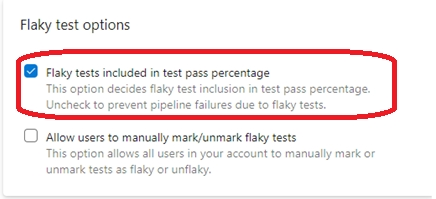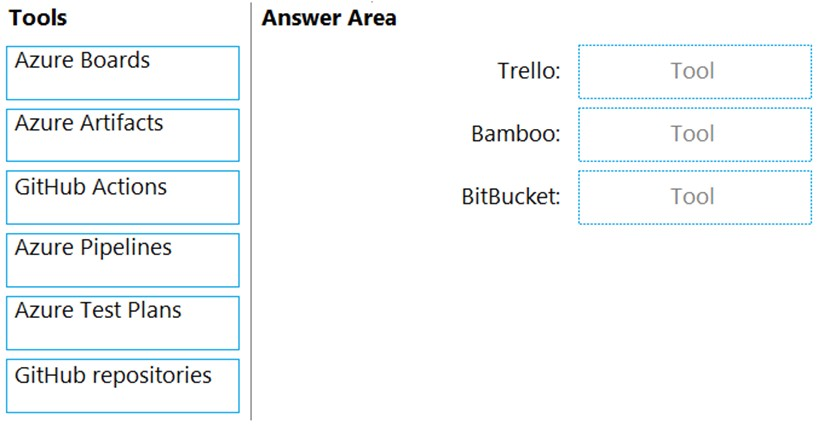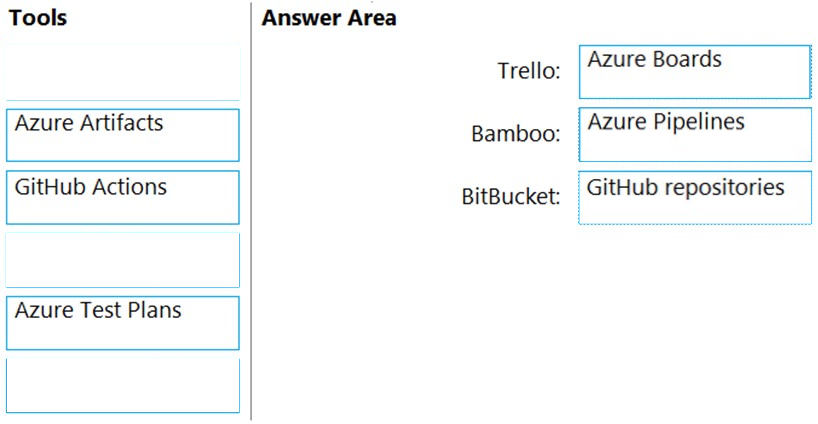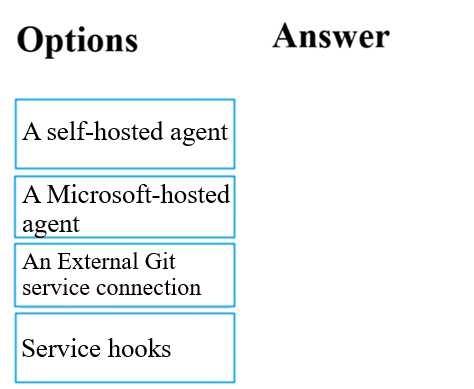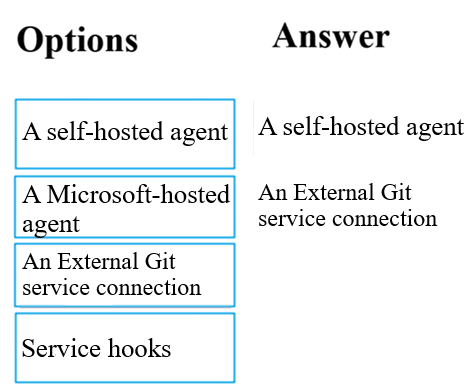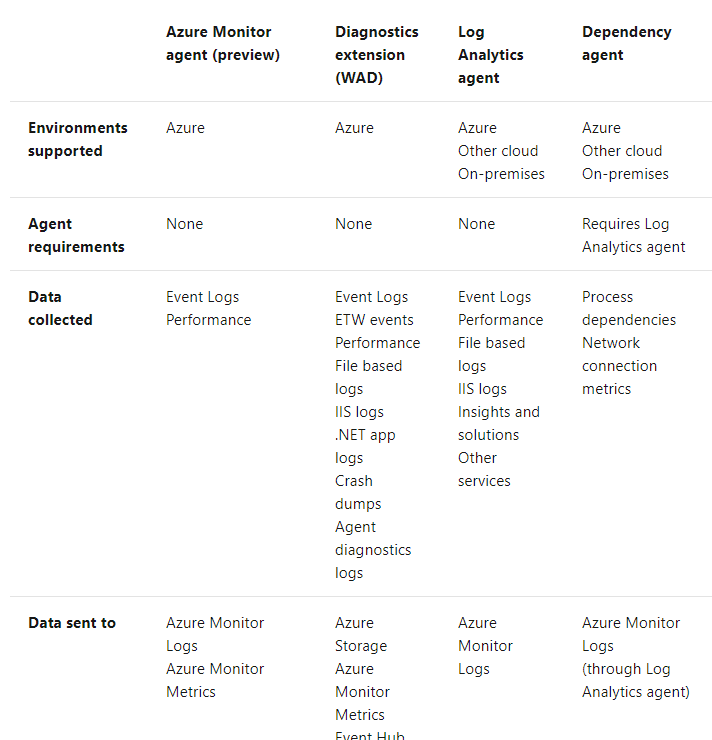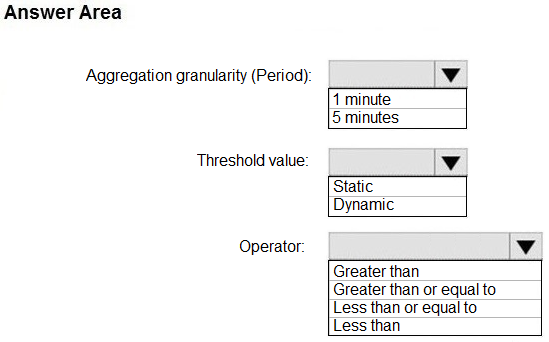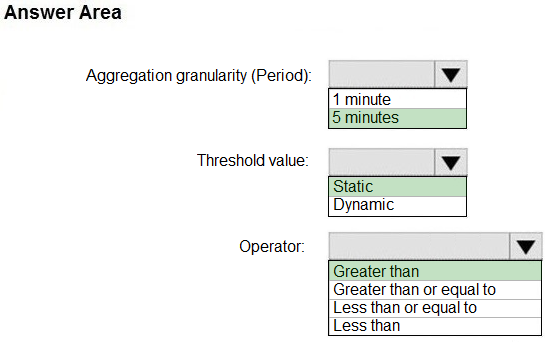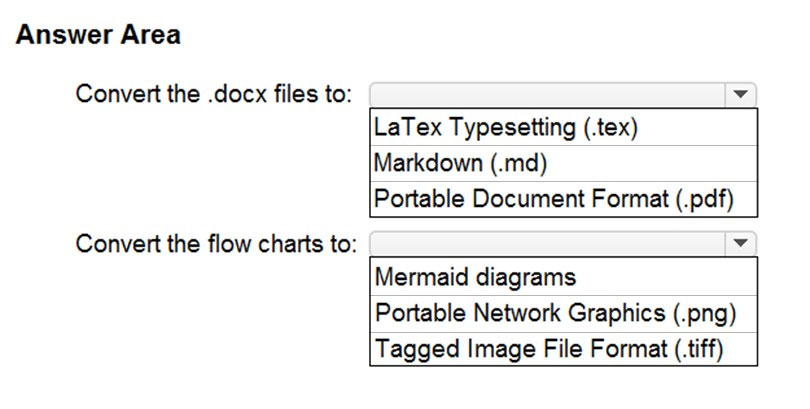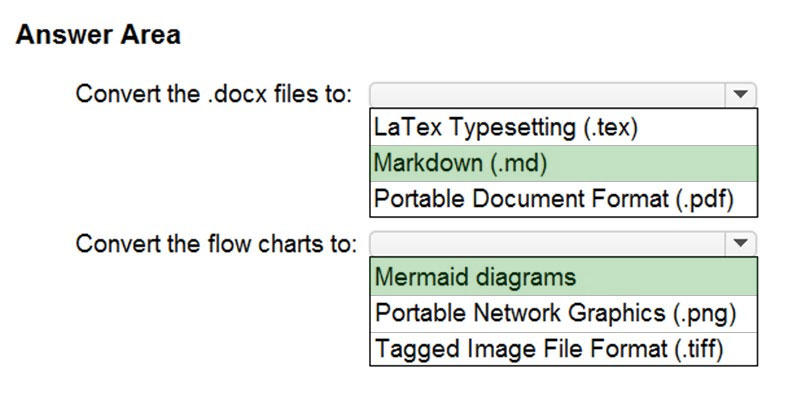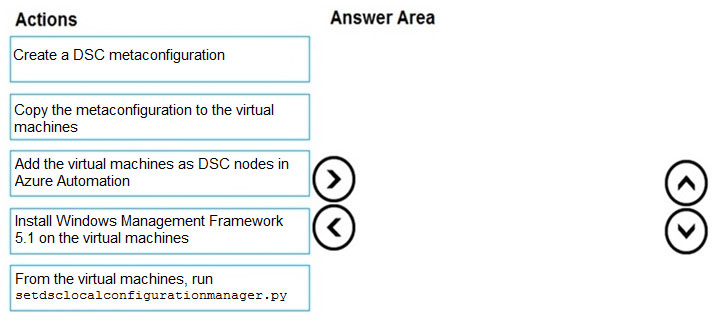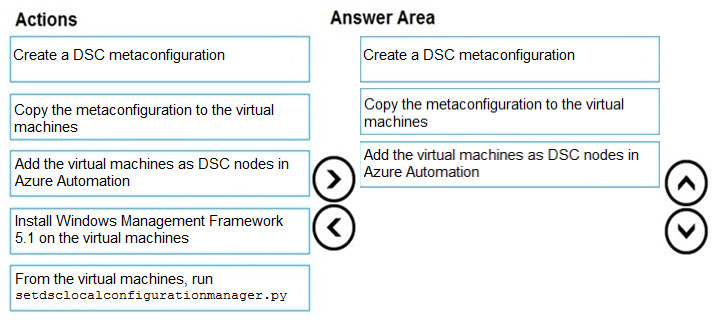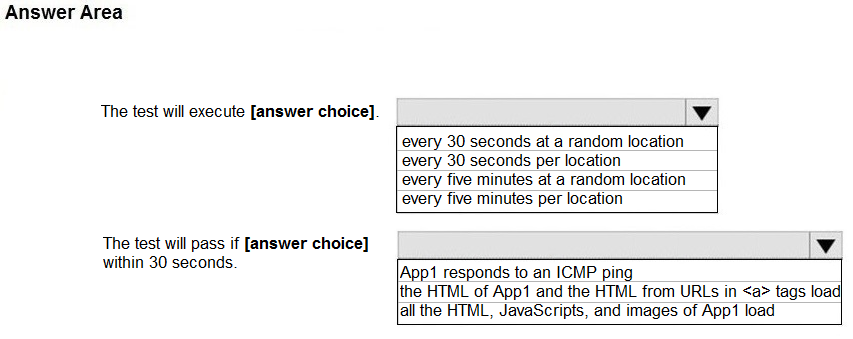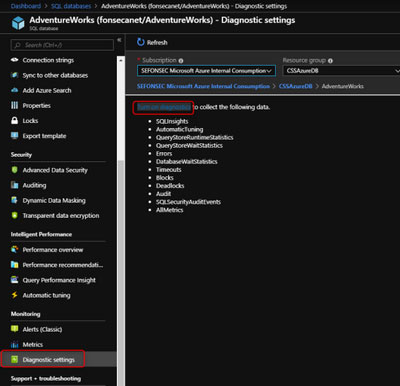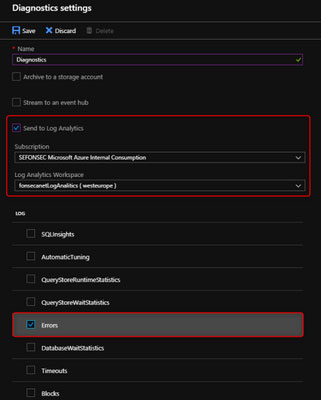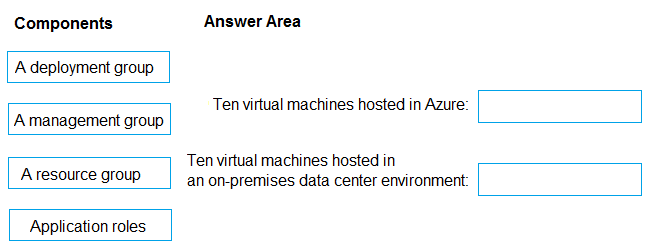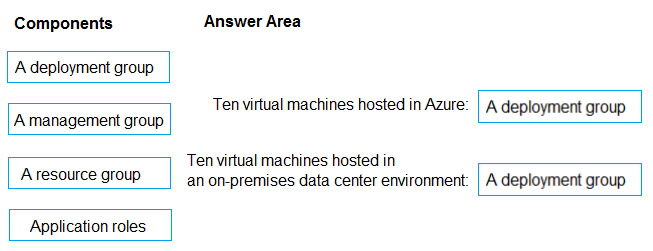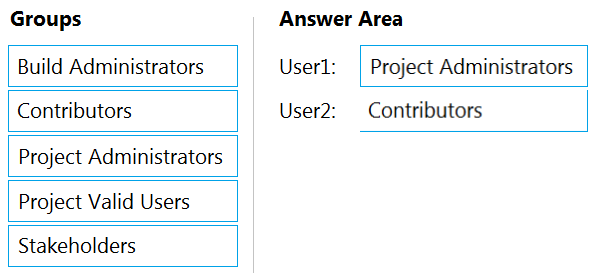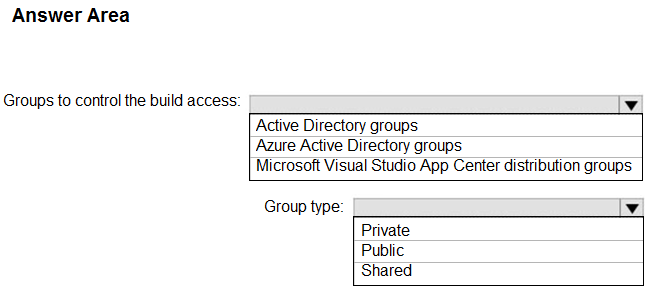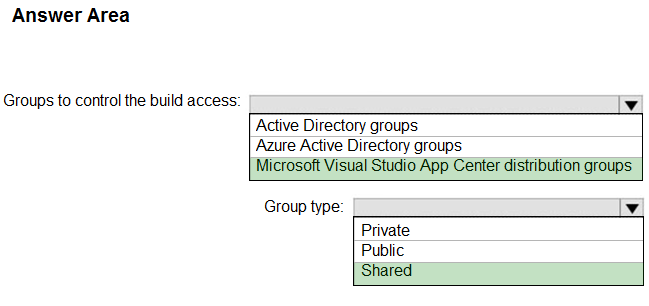AZ-400 Dump Free – 50 Practice Questions to Sharpen Your Exam Readiness.
Looking for a reliable way to prepare for your AZ-400 certification? Our AZ-400 Dump Free includes 50 exam-style practice questions designed to reflect real test scenarios—helping you study smarter and pass with confidence.
Using an AZ-400 dump free set of questions can give you an edge in your exam prep by helping you:
- Understand the format and types of questions you’ll face
- Pinpoint weak areas and focus your study efforts
- Boost your confidence with realistic question practice
Below, you will find 50 free questions from our AZ-400 Dump Free collection. These cover key topics and are structured to simulate the difficulty level of the real exam, making them a valuable tool for review or final prep.
You have a build pipeline in Azure Pipelines that occasionally fails. You discover that a test measuring the response time of an API endpoint causes the failures. You need to prevent the build pipeline from failing due to the test. Which two actions should you perform? Each correct answer presents part of the solution. NOTE: Each correct selection is worth one point.
A. Set Flaky test detection to Off.
B. Clear Flaky tests included in test pass percentage.
C. Enable Test Impact Analysis (TIA).
D. Manually mark the test as flaky.
E. Enable test slicing.
DRAG DROP - You have an Azure DevOps pipeline that is used to deploy a Node.js app. You need to ensure that the dependencies are cached between builds. How should you configure the deployment YAML? To answer, drag the appropriate values to the correct targets. Each value may be used once, more than once, or not at all. You may need to drag the split bar between panes or scroll to view content. NOTE: Each correct selection is worth one point.
DRAG DROP - You have an Azure Repos repository named Repo1 that is used for source control. You need to configure code scanning for Repo1. Which three tasks should the pipeline perform in sequence? To answer, move the appropriate tasks from the list of tasks to the answer area and arrange them in the correct order.
DRAG DROP - You need to replace the existing DevOps tools to support the planned changes. What should you use? To answer, drag the appropriate tools to the correct targets. Each tool may be used once, more than once, or not at all. You may need to drag the split bar between panes or scroll to view content. NOTE: Each correct selection is worth one point. Select and Place:
SIMULATION - You plan to deploy a website that will be hosted in two Azure regions. You need to create an Azure Traffic Manager profile named az400123456789n1-tm in a resource group named RG1lod123456789. The solution must ensure that users will always connect to a copy of the website that is in the same country. To complete this task, sign in to the Microsoft Azure portal.
DRAG DROP - You have an on-premises Bitbucket Server with a firewall configured to block inbound Internet traffic. The server is used for Git-based source control. You intend to manage the build and release processes using Azure DevOps. This plan requires you to integrate Azure DevOps and Bitbucket. Which of the following will allow for this integration? Answer by dragging the correct options from the list to the answer area. Select and Place:
You are designing a strategy to monitor the baseline metrics of Azure virtual machines that run Windows Server. You need to collect detailed data about the processes running in the guest operating system. Which two agents should you deploy? Each correct answer presents part of the solution. NOTE: Each correct selection is worth one point.
A. the Telegraf agent
B. the Azure Log Analytics agent
C. the Azure Network Watcher Agent for Windows
D. the Dependency agent
Your company uses a Git repository in Azure Repos to manage the source code of a web application. The master branch is protected from direct updates. Developers work on new features in the topic branches. Because of the high volume of requested features, it is difficult to follow the history of the changes to the master branch. You need to enforce a pull request merge strategy. The strategy must meet the following requirements: ✑ Consolidate commit histories. ✑ Merge the changes into a single commit. Which merge strategy should you use in the branch policy?
A. squash merge
B. fast-forward merge
C. Git fetch
D. no-fast-forward merge
Your company has an Azure DevOps environment that can only be accessed by Azure Active Directory users. You are instructed to make sure that the Azure DevOps environment can only be accessed from devices connected to the company's on-premises network. Which of the following actions should you take?
A. Assign the devices to a security group.
B. Create a GPO.
C. Configure Security in Project Settings from Azure DevOps.
D. Configure conditional access in Azure Active Directory.
Note: This question is part of a series of questions that present the same scenario. Each question in the series contains a unique solution that might meet the stated goals. Some question sets might have more than one correct solution, while others might not have a correct solution. After you answer a question in this section, you will NOT be able to return to it. As a result, these questions will not appear in the review screen. You have an Azure DevOps organization named Contoso and an Azure subscription. The subscription contains an Azure virtual machine scale set named VMSS1 that is configured for autoscaling. You have a project in Azure DevOps named Project1. Project1 is used to build a web app named App1 and deploy App1 to VMSS1. You need to ensure that an email alert is generated whenever VMSS1 scales in or out. Solution: From Azure Monitor, configure the autoscale settings. Does this meet the goal?
A. Yes
B. No
HOTSPOT - You use Azure DevOps to manage the build and deployment of an app named App1. You have a release pipeline that deploys a virtual machine named VM1. You plan to monitor the release pipeline by using Azure Monitor. You need to create an alert to monitor the performance of VM1. The alert must be triggered when the average CPU usage exceeds 70 percent for five minutes. The alert must calculate the average once every minute. How should you configure the alert rule? To answer, select the appropriate options in the answer area. NOTE: Each correct selection is worth one point. Hot Area:
Your company is building a new solution in Java. The company currently uses a SonarQube server to analyze the code of .NET solutions. You need to analyze and monitor the code quality of the Java solution. Which task types should you add to the build pipeline?
A. Maven
B. CocoaPods
C. Xcode
D. Gulp
Your company uses Azure DevOps for the build pipelines and deployment pipelines of Java-based projects. You need to recommend a strategy for managing technical debt. Which two actions should you include in the recommendation? Each correct answer presents part of the solution. NOTE: Each correct selection is worth one point.
A. Configure post-deployment approvals in the deployment pipeline.
B. Configure pre-deployment approvals in the deployment pipeline.
C. Integrate Azure DevOps and SonarQube.
D. Integrate Azure DevOps and Azure DevTest Labs.
You have a GitHub repository that contains workflows. The workflows contain steps that execute predefined actions. Each action has one or more versions. You need to request the specific version of an action to execute. Which three attributes can you use to identify the version? Each correct answer presents a complete solution. NOTE: Each correct selection is worth one point.
A. the SHA-based hashes
B. the tag
C. the runner
D. the branch
E. the serial
You use Azure Artifacts to host NuGet packages that you create. You need to make one of the packages available to anonymous users outside your organization. The solution must minimize the number of publication points. What should you do?
A. Change the feed URL of the package
B. Create a new feed for the package
C. Promote the package to a release view.
D. Publish the package to a public NuGet repository.
Your company has a project in Azure DevOps for a new application. The application will be deployed to several Azure virtual machines that run Windows Server 2019. You need to recommend a deployment strategy for the virtual machines. The strategy must meet the following requirements: ✑ Ensure that the virtual machines maintain a consistent configuration. ✑ Minimize administrative effort to configure the virtual machines. What should you include in the recommendation?
A. Azure Resource Manager templates and the PowerShell Desired State Configuration (DSC) extension for Windows
B. Deployment YAML and Azure pipeline deployment groups
C. Azure Resource Manager templates and the Custom Script Extension for Windows
D. Deployment YAML and Azure pipeline stage templates
You manage a project by using Azure Boards. You manage the project code by using GitHub. You have three work items that have IDs of 456, 457, and 458. You need to create a pull request that will be linked to all the work items. The solution must set the state of work item 456 to done. What should you add to the commit message?
A. #AB456, #AB457, #AB458Completed #AB456
B. #456, #457, #458Completed #456
C. Done #AB456, #AB457, #AB458
D. #AB456, #AB457, #AB458Verifies #AB456
You have a 1-TB Azure Repos repository named repo1. You need to clone repo1. The solution must meet the following requirements: • You must be able to search the commit history of the /src directory • The amount of time it takes to clone the repository must be minimized Which command should you run?
A. git clone –-depth-1 git@ssh.dev.azure.com:v3/org/Project1/repo1
B. git clone –-filter=blob:none git@ssh.dev.azure.com:v3/org/Project1/repo1
C. git clone git@ssh.dev.azure.com.com:v3/org/Project1/repo1
D. git clone –-filter=true:0 git@ssh.dev.azure.com:v3/org/Project1/repo1
Your company uses Azure DevOps for the build pipelines and deployment pipelines of Java-based projects. You need to recommend a strategy for managing technical debt. Which action should you include in the recommendation?
A. Configure post-deployment approvals in the deployment pipeline.
B. Integrate Azure DevOps and SonarQube.
C. Integrate Azure DevOps and Azure DevTest Labs.
Note: This question is part of a series of questions that present the same scenario. Each question in the series contains a unique solution that might meet the stated goals. Some question sets might have more than one correct solution, while others might not have a correct solution. After you answer a question in this section, you will NOT be able to return to it. As a result, these questions will not appear in the review screen. You manage a project in Azure DevOps. You need to prevent the configuration of the project from changing over time. Solution: Implement Continuous Integration for the project. Does this meet the goal?
A. Yes
B. No
Your company has 60 developers who are assigned to four teams. Each team has 15 members. The company uses an agile development methodology. You need to structure the work of the development teams so that each team owns their respective work while working together to reach a common goal. Which parts of the taxonomy should you enable the team to perform autonomously?
A. Features and Tasks
B. Initiatives and Epics
C. Epics and Features
D. Stories and Tasks
You use GitHub for source control of .NET applications. You need to deploy a documentation solution that meets the following requirements: ✑ Documents will be written in Markdown as developers make code changes. ✑ Changes to the documents will trigger the recompilation of a static website. ✑ Users will access the documents from the static website. ✑ Documents will be stored in a GitHub repository. Which two tools can you use to compile the website? Each correct answer presents a complete solution. NOTE: Each correct selection is worth one point.
A. Word Press
B. Jekyll
C. DocFX
D. caret
E. Medium
You manage projects by using Azure Boards. You have a current work item name itemA that is dependant on a work item named itemB. You need to define the dependency for itemA. What should you do in the web portal for Azure DevOps?
A. Add a Parent link to the user story of itemA.
B. From Backlogs, open the context menu, select Add link, and then select itemA. Set Link type to Successor and add the ID of itemB.
C. From itemA, open the Links tab, and then select Add link. Set Link type to References and add the ID of itemB.
D. From Backlogs, open he context menu, select Add link, and then select itemA. Set Link type to References and add the ID of itemB.
You have an Azure subscription that contains an Azure Pipelines pipeline named Pipeline1 and a user named User1. Pipeline1 is used to build and test an app named App1. User1 is assigned the Contributors role for Pipeline1. You plan to test App1 by using an Azure Deployment Environments environment. You need to ensure that User1 can provision the environment. The solution must follow the principle of least privilege. Which role should you assign to User1?
A. DevCenter Project Admin
B. Deployment Environments User
C. Contributors
D. Build Administrators
DRAG DROP - You have an Azure Pipelines application CI/CD pipeline named Pipeline1. You need to add OWASP ZAP testing to Pipeline1. Which four actions should you add to Pipeline1 in sequence? To answer, move the appropriate actions from the list of actions to the answer area and arrange them in the correct order.
You need to implement Project4. What should you do first?
A. Add the FROM instruction in the Dockerfile file.
B. Add a Copy and Publish Build Artifacts task to the build pipeline.
C. Add a Docker task to the build pipeline.
D. Add the MAINTAINER instruction in the Dockerfile file.
HOTSPOT - Your company uses GitHub for source control. GitHub repositories store source code and store process documentation. The process documentation is saved as Microsoft Word documents that contain simple flow charts stored as .bmp files. You need to optimize the integration and versioning of the process documentation and the flow charts. The solution must meet the following requirements: ✑ Store documents as plain text. ✑ Minimize the number of files that must be maintained. ✑ Simplify the modification, merging, and reuse of flow charts. Simplify the modification, merging, and reuse of documents.Hot Area:
Note: This question is part of a series of questions that present the same scenario. Each question in the series contains a unique solution that might meet the stated goals. Some question sets might have more than one correct solution, while others might not have a correct solution. After you answer a question in this section, you will NOT be able to return to it. As a result, these questions will not appear in the review screen. You manage a project in Azure DevOps. You need to prevent the configuration of the project from changing over time. Solution: Implement Continuous Assurance for the project. Does this meet the goal?
A. Yes
B. No
You have a pipeline named Pipeline1 in Azure Pipelines. You need to create a service connection to enable Pipeline1 to download a public container image. Which type of service connection should you create?
A. a Docker host
B. a Docker registry
C. Azure Service Fabric
D. Azure Kubernetes Service (AKS)
DRAG DROP - Your company has two virtual machines that run Linux in a third-party public cloud. You plan to use the company's Azure Automation State Configuration implementation to manage the two virtual machines and detect configuration drift. You need to onboard the Linux virtual machines. You install PowerShell Desired State Configuration (DSC) on the virtual machines, and then run register.py. Which three actions should you perform next in sequence? To answer, move the actions from the list of actions to the answer area and arrange them in the correct order. Select and Place:
HOTSPOT - You have an application named App1 that has a custom domain of app.contoso.com. You create a test in Azure Application Insights as shown in the following exhibit.Use the drop-down menus to select the answer choice that completes each statement based on the information presented in the graphic. NOTE: Each correct selection is worth one point. Hot Area:
You need to perform the GitHub code migration. The solution must support the planned changes for the DevOps environment. What should you use?
A. git clone
B. GitHub Importer
C. Import repository in Azure Repos
D. git-tfs
You have an Azure DevOps organization named Contoso. You need to receive Microsoft Teams notifications when work items are updated. What should you do?
A. From Azure DevOps, configure a service hook subscription
B. From Microsoft Teams, configure a connector
C. From the Microsoft Teams admin center, configure external access
D. From Microsoft Teams, add a channel
E. From Azure DevOps, install an extension
Note: This question is part of a series of questions that present the same scenario. Each question in the series contains a unique solution that might meet the stated goals. Some question sets might have more than one correct solution, while others might not have a correct solution. After you answer a question in this section, you will NOT be able to return to it. As a result, these questions will not appear in the review screen. You have an approval process that contains a condition. The condition requires that releases be approved by a team leader before they are deployed. You have a policy stating that approvals must occur within eight hours. You discover that deployment fail if the approvals take longer than two hours. You need to ensure that the deployments only fail if the approvals take longer than eight hours. Solution: From Pre-deployment conditions, you modify the Time between re-evaluation of gates option. Does this meet the goal?
A. Yes
B. No
You have a web app hosted on Azure App Service. The web app stores data in an Azure SQL database. You need to generate an alert when there are 10,000 simultaneous connections to the database. The solution must minimize development effort. Which option should you select in the Diagnostics settings of the database?
A. Send to Log Analytics
B. Stream to an event hub
C. Archive to a storage account
You have a GitHub repository. You create a new repository in Azure DevOps. You need to recommend a procedure to clone the repository from GitHub to Azure DevOps. What should you recommend?
A. Create a pull request.
B. Create a webhook.
C. Create a service connection for GitHub.
D. From Import a Git repository, click Import.
E. Create a personal access token in Azure DevOps.
HOTSPOT - You are interrogating logs by using KQL. You execute the query shown in the following exhibit.Use the drop-down menus to select the answer choice that completes each statement based on the information presented in the graphic. NOTE: Each correct selection is worth one point.
DRAG DROP - You have a GitHub repository named repo1 that stores the code of an app named App1. You need deploy a workflow for repo1 by using GitHub Actions. The solution must meet the following requirements: • Scan on pushes to the main branch. • Scan on pull requests to the main branch. • Scan on pull requests to any branch that has a prefix of releases/. • Scan all the files in the subdirectories of the src directory. • Exclude scanning of markdown files. How should you complete the code? To answer, drag the appropriate values to the correct targets. Each value may be used once, more than once, or not at all. You may need to drag the split bar between panes or scroll to view content. NOTE: Each correct selection is worth one point.
Note: This question is part of a series of questions that present the same scenario. Each question in the series contains a unique solution that might meet the stated goals. Some question sets might have more than one correct solution, while others might not have a correct solution. After you answer a question in this section, you will NOT be able to return to it. As a result, these questions will not appear in the review screen. You have an Azure DevOps project. Your build process creates several artifacts. You need to deploy the artifacts to on-premises servers. Solution: You deploy an Octopus Deploy server. You deploy a polled Tentacle agent to an on-premises server. You add an Octopus task to the deployment pipeline. Does this meet the goal?
A. Yes
B. No
DRAG DROP - Your company plans to deploy an application to the following endpoints: ✑ Ten virtual machines hosted in Azure ✑ Ten virtual machines hosted in an on-premises data center environment All the virtual machines have the Azure Pipelines agent. You need to implement a release strategy for deploying the application to the endpoints. What should you recommend using to deploy the application to the endpoints? To answer, drag the appropriate components to the correct endpoints. Each component may be used once, more than once, or not at all. You may need to drag the split bar between panes or scroll to view content. NOTE: Each correct selection is worth one point. Select and Place:
DRAG DROP - You have a private project in Azure DevOps and two users named User1 and User2. You need to add User1 and User2 to groups to meet the following requirements: ✑ User1 must be able to create a code wiki. ✑ User2 must be able to edit wiki pages. ✑ The solution must use the principle of least privilege. To which group should you add each user? To answer, drag the appropriate groups to the correct users. Each group may be used once, more than once, or not at all. You may need to drag the split bar between panes or scroll to view content. NOTE: Each correct selection is worth one point. Select and Place:
You have an Azure DevOps organization named Contoso and an Azure subscription. The subscription contains an Azure virtual machine scale set named VMSS1 and an Azure Standard Load Balancer named LB1. LB1 distributes incoming requests across VMSS1 instances. You use Azure DevOps to build a web app named App1 and deploy App1 to VMSS1. App1 is accessible via HTTPS only and configured to require mutual authentication by using a client certificate. You need to recommend a solution for implementing a health check of App1. The solution must meet the following requirements: ✑ Identify whether individual instances of VMSS1 are eligible for an upgrade operation. ✑ Minimize administrative effort. What should you include in the recommendation?
A. an Azure Load Balancer health probe
B. Azure Monitor autoscale
C. the Custom Script Extension
D. the Application Health extension
You have a project in Azure DevOps named Project1. Project1 contains a build pipeline named Pipe1 that builds an application named App1. You have an agent pool named Pool1 that contains a Windows Server 2022-based self-hosted agent. Pipe1 uses Pool1. You plan to implement another project named Project2. Project2 will have a build pipeline named Pipe2 that builds an application named App2. App1 and App2 have conflicting dependencies. You need to minimize the possibility that the two build pipelines will conflict with each other. The solution must minimize infrastructure costs. What should you do?
A. Add another self-hosted agent.
B. Add a Docker Compose task to the build pipelines.
C. Change the self-hosted agent to use Red Hat Enterprise Linux (RHEL) 9.
D. Create two container jobs.
HOTSPOT - You are using PowerShell to administer Azure Log Analytics workspaces. You need to list the available workspaces and their properties. How should you complete the command? To answer, select the appropriate options in the answer area. NOTE: Each correct selection is worth one point. Hot Area:
You are designing a configuration management solution to support five apps hosted on Azure App Service. Each app is available in the following three environments: development, test, and production. You need to recommend a configuration management solution that meets the following requirements: ✑ Supports feature flags ✑ Tracks configuration changes from the past 30 days ✑ Stores hierarchically structured configuration values ✑ Controls access to the configurations by using role-based access control (RBAC) permissions ✑ Stores shared values as key/value pairs that can be used by all the apps Which Azure service should you recommend as the configuration management solution?
A. Azure Cosmos DB
B. Azure App Service
C. Azure App Configuration
D. Azure Key Vault
You have an app named App1 that you release by using Azure Pipelines. App1 has the versions shown in the following table.You complete a code change to fix a bug that was introduced in version 3.4.3. Which version number should you assign to the release?
A. 3.4.4
B. 3.4.8
C. 3.5.0
D. 4.0.1
Your development team is building a new web solution by using the Microsoft Visual Studio integrated development environment (IDE). You need to make a custom package available to all the developers. The package must be managed centrally, and the latest version must be available for consumption in Visual Studio automatically. Which three actions should you perform? Each correct answer presents part of the solution. NOTE: Each correct selection is worth one point.
A. Publish the package to a feed.
B. Create a new feed in Azure Artifacts.
C. Upload a package to a Git repository.
D. Add the package URL to the Environment settings in Visual Studio.
E. Add the package URL to the NuGet Package Manager settings in Visual Studio.
F. Create a Git repository in Azure Repos.
HOTSPOT - Your company is creating a suite of three mobile applications. You need to control access to the application builds. The solution must be managed at the organization level. What should you use? To answer, select the appropriate options in the answer area. NOTE: Each correct selection is worth one point. Hot Area:
Note: This question is part of a series of questions that present the same scenario. Each question in the series contains a unique solution that might meet the stated goals. Some question sets might have more than one correct solution, while others might not have a correct solution. After you answer a question in this section, you will NOT be able to return to it. As a result, these questions will not appear in the review screen. You have an Azure DevOps project. Your build process creates several artifacts. You need to deploy the artifacts to on-premises servers. Solution: You deploy an Azure self-hosted agent to an on-premises server. You add a Copy and Publish Build Artifacts task to the deployment pipeline. Does this meet the goal?
A. Yes
B. No
You are configuring project metrics for dashboards in Azure DevOps. You need to configure a chart widget that measures the elapsed time to complete work items once they become active. Which of the following is the widget you should use?
A. Cumulative Flow Diagram
B. Burnup
C. Cycle time
D. Burndown
Access Full AZ-400 Dump Free
Looking for even more practice questions? Click here to access the complete AZ-400 Dump Free collection, offering hundreds of questions across all exam objectives.
We regularly update our content to ensure accuracy and relevance—so be sure to check back for new material.
Begin your certification journey today with our AZ-400 dump free questions — and get one step closer to exam success!


